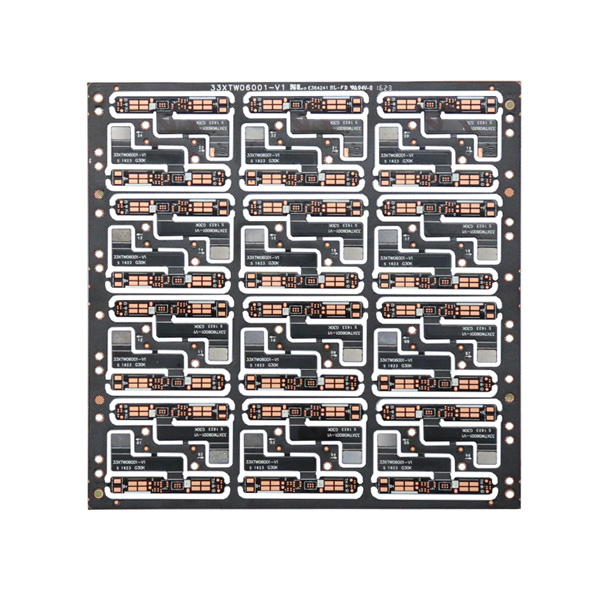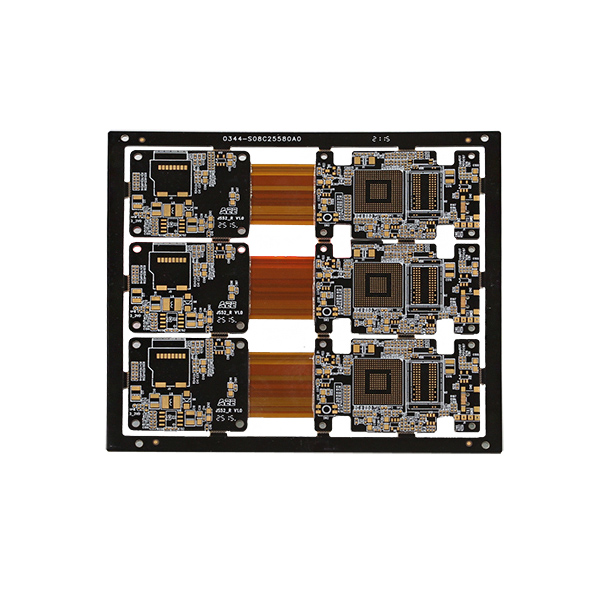Why Choose 4 Layer Flexible PCB for High-Density Applications?
In today's fast-paced technological world, the demand for high-performance, compact, and reliable electronic devices has led to the development of advanced circuit board technologies. One of the most notable innovations in this area is the 4 layer flexible PCB (Printed Circuit Board), which offers a perfect balance between performance, space-saving, and flexibility. If you're working on high-density applications where performance is crucial, a 4-layer flexible PCB can offer substantial benefits. Let's explore why 4 layer flexible PCBs are the preferred choice for many industries.

What is a 4 Layer Flexible PCB?
Before we dive into the advantages, let's quickly define what a 4 layer flexible PCB is. A 4-layer flexible PCB consists of four layers of conductive traces sandwiched between layers of flexible dielectric material. These layers are designed to provide more complex circuitry, allowing for higher performance in a compact form factor. The outer layers are typically made of copper, while the inner layers, which are used to route signals and power, are often stacked to save space and enhance functionality.
Why Choose a 4 Layer Flexible PCB?
1.Compact Design for High-Density Applications
One of the main reasons to choose a 4-layer flexible PCB is its ability to fit complex circuitry into a smaller, more compact design. As electronic devices become smaller and more powerful, there is an increasing need for high-density applications. The 4-layer flexible PCB allows for multiple circuits to coexist within the same limited space. It can handle more components and circuits than a standard two-layer PCB, making it an ideal choice for high-density applications like smartphones, wearables, medical devices, and automotive electronics.
2.Enhanced Signal Integrity
In high-density applications, signal integrity is critical. Signal loss, noise, and interference can negatively impact the performance of the device. The 4-layer flexible PCB provides improved signal integrity due to its optimized design. The inner layers, where the ground and power planes are located, reduce the potential for electromagnetic interference (EMI) and signal crosstalk. This makes 4-layer flexible PCBs an excellent choice for applications that require high-speed data transmission, such as communication systems and high-performance computing.
3.Increased Durability and Flexibility
The flexible nature of 4-layer PCBs is another key benefit. They are made with flexible substrates like polyimide or polyester, which allow them to be bent or folded without compromising their functionality. This makes them highly durable and perfect for devices that require bending or twisting, such as wearables or foldable displays. Despite their flexibility, 4-layer flexible PCBs maintain their structural integrity and reliability, even under harsh environmental conditions.
4.Cost-Effective for Complex Designs
Designing high-density circuits with traditional rigid PCBs often requires more space and additional components, leading to higher production costs. 4-layer flexible PCBs, however, allow engineers to achieve complex circuit designs in a smaller footprint. This reduces the overall size of the PCB and minimizes the need for additional interconnects or connectors. For manufacturers, this can translate into lower costs, faster production times, and more competitive pricing in the marketplace.
5.Improved Thermal Management
In high-density applications, heat management is an ongoing challenge. 4-layer flexible PCBs offer improved thermal performance due to their multi-layer construction. The inner layers of the PCB can help distribute heat more evenly, reducing the risk of overheating and improving the longevity of the components. This is especially beneficial in applications such as automotive electronics and LED lighting, where excessive heat can cause components to fail prematurely.
6.Better Design Flexibility
The flexibility of 4-layer PCBs makes them a great choice for innovative designs where traditional rigid PCBs might not be practical. Engineers can design circuits that curve, wrap, or fold without sacrificing performance. This design flexibility is a game-changer for industries like aerospace, where weight reduction and space efficiency are critical, and wearable tech, where compactness and comfort are key factors.

7.Versatile Applications
The versatility of 4-layer flexible PCBs makes them suitable for a wide range of high-density applications. They are commonly used in industries such as:
Consumer Electronics: Smartphones, smartwatches, and tablets.
Medical Devices: Portable diagnostic tools, wearables, and diagnostic equipment.
Automotive: Advanced driver-assistance systems (ADAS), infotainment, and safety systems.
Aerospace: Lightweight, space-efficient electronics for aircraft and satellites.
Conclusion: A Smart Choice for High-Density Applications
In conclusion, 4-layer flexible PCBs are an excellent choice for high-density applications due to their compact design, enhanced signal integrity, flexibility, durability, and cost-effectiveness. These advantages make them ideal for industries where space, performance, and reliability are crucial. As electronics continue to shrink in size while increasing in complexity, 4-layer flexible PCBs will remain at the forefront of innovation, providing engineers with the tools they need to design high-performance devices that meet the demands of tomorrow.
If you're looking to incorporate 4-layer flexible PCBs into your design, choosing the right manufacturer with experience in high-density applications is essential. With the right materials and manufacturing processes, these PCBs can provide the performance, durability, and flexibility that modern electronics require.
Send PCB Files to Sales@ucreatepcba.com, We Will Quote You Very Soon!
Request PCB Manufacturing & Assemble Quote Now



